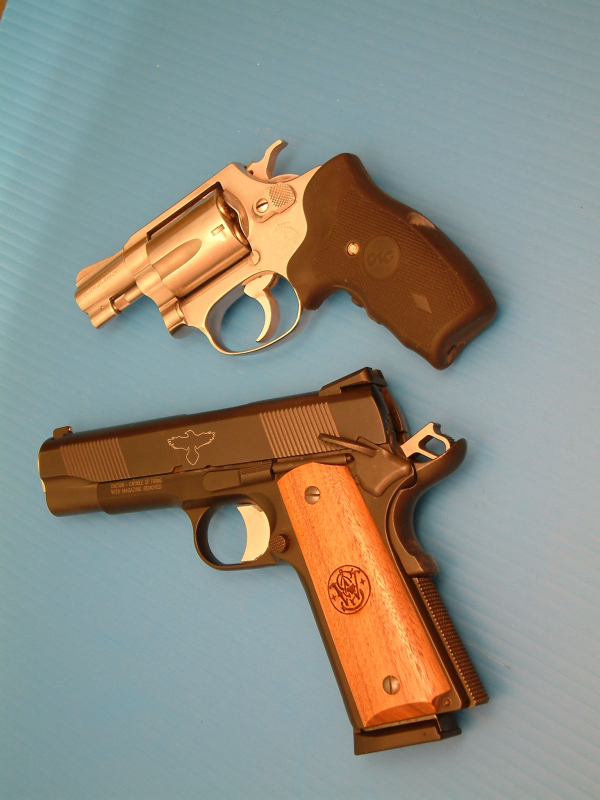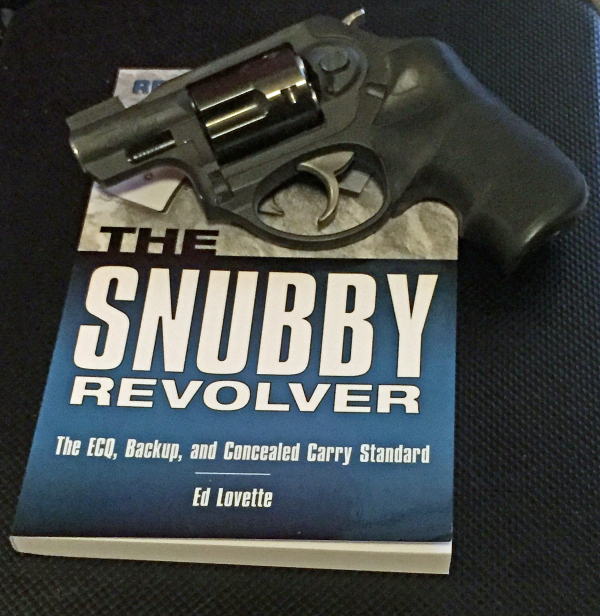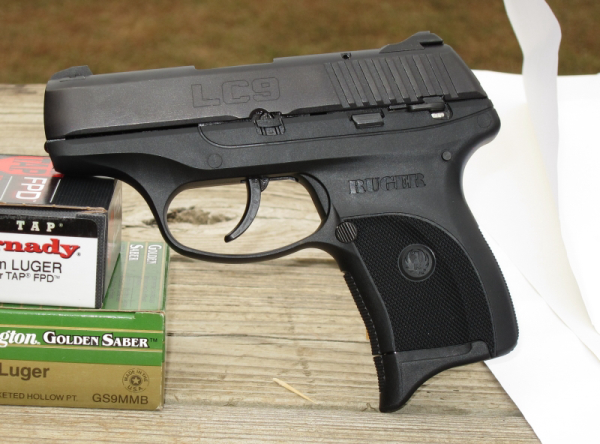Today’s feature is from correspondent Dave Spaulding.
It’s obvious that citizens across this great nation are feeling a financial pinch. Everyone is feeling it, from doctors to maintenance workers, from cops to firefighters. People from all walks of life are trying to stretch their dollar. The price of gas and all of the things that affects is downright painful. Many are doing away with their landlines and using their cell phones for calls in and out of the home. After all, why pay for two phones when one will do? This same logic can be applied to daily carry and home- defense firearms. In times past, savvy gun-owners with carry licenses had a gun for carry and a gun for the house, but this trend is shifting -- potentially due to a struggling economy.

In one of my last pistol classes, a young lady told me that she was now carrying her .38 Special Ruger LCR each day and keeping it on the nightstand each night. Her thought was, “Why have two guns when one will perform the needed task?” My student explained, “I carry this gun daily, practice with it at least once a month, and have trained with it in low light. It only makes sense that I will shoot it best when trouble comes, so why complicate it? I’ll just use one gun for all needs.” Perhaps it's an application of the old saying, “beware of the man (or woman) who has but one gun, for they likely know how to use it.” Her logic is sound; however, you may not have the same needs. In addition, many people buy a gun and never shoot it, so the old saying is really a myth.
Naturally, gun-owners wonder, “What do members of my family rely on if my gun leaves the house with me?”
An excellent question. The young lady above lives alone, so keeping her gun with her not only offers continuity but also keeps the gun from falling into the wrong hands if someone breaks in when she’s away. A single gun cannot be in two places at once, so if your family members need a gun at home, you’ll need a second gun, regardless of how tight your budget is—no way around it. One of my students told me he does not leave a gun at home with his spouse, because she refuses to practice with it. He believes, in this case, the weapon is more likely to be used against her than to protect her and the home. However, this may not be true.

Ed Lovette, a former CIA Para-Military Operations officer and the author of The Snubby Revolver, conducted a fairly extensive research effort into armed citizens’ use of handguns. He found the majority of those who have repelled attacks in or around their home were not gun-school graduates. While Ed feels advanced training is of great benefit, it appears it is not the sole variable for successfully thwarting a criminal attack. Many of us who have studied armed conflict believe that success usually comes from a “willing to do whatever it takes” state of mind. I have long believed that anything can be a weapon if your mind makes it so, and armed citizens across this land have continually proven this.
If holding down the family budget is a concern, then selecting a cost- effective but reliable firearm is key. While the compact .380 ACP might not be the best selection for personal security, guns like the .380 Ruger LCP are reliable, affordable and certainly better than facing an attacker empty-handed. I was recently walking the aisles of a local gun show when I came across an older .38 Special Smith & Wesson Model 36 snubby for $150. The exterior of the gun was rough, but the barrel and cylinder chambers were free of pitting, the cylinder locked up solid, and the action wasn’t bad. It would have been very easy to buy this gun and clean it up—a gun does not have to look gun-shop new to be effective.

Whatever type of gun you choose, it should be able to serve in carry and home- defense roles, which will make the size, weight and shape of the gun increasingly important. While the LCP is certainly easy to carry, some will say it is too small for home defense, as it has small grips that are hard to handle for follow-up shots. The 2-inch snubby, however, seems to get the nod from both the small enough and big enough crowds. Different size grips can be installed to make the gun easy to carry but large enough to hang onto in rapid fire. Many knowledgeable shooters also draw the line at the .38 Special when it comes to incapacitation ability—they are just not comfortable with a .380 ACP. But for those on a tight budget, it’s not about what they want but what they can afford. It is wise not to be too condescending as, during an attack, any gun is better than a pair of empty hands.
The sub-compact 9mm, like the Ruger LC-9, Kahr or Glock 43 can be a good overall choice, but the price will also reflect their popularity, thus they are probably not the best choice for the budget conscious. In addition, seldom will you find these guns to be “a deal” like the Model 36 I spoke of earlier.
Once you have decided on the type and number of guns you’ll need, consider how the gun will be carried and positioned, both on your person and in your home. For example, when you come home and take the gun out (e.g., a holster or purse), should it go into some type of storage receptacle (e.g., a bedside safe or closet vault) or on the nightstand beside your bed? Small children in the home or potential visitors will make this an easy decision. Whatever you choose to do, do it consistently. It only takes one slip-up for an attack to become a tragedy.

If your gun has a rail, should you mount a light or laser only when it’s at home, or would continuity of gear be wise? This will likely depend on how large you are and whether you can conceal a gun with a mounted light or laser.
Is it a good idea to have a “gear down” ritual, in which the gun comes off at the same time each day and is placed on the nightstand? Similarly, would you have a “gear up” ritual each morning, or should this be situation dependent? The concept of gearing up (and down) is something taken from my SWAT days. In my case, as I put on my various pieces of kit in the morning, I make sure I place my folding knife in my right-rear pocket, my flashlight in my left-side pocket and my holster on my belt and then press check and place my pistol in the holster. When gearing down, I follow the same process in reverse, placing the items in the drawer near my bed in the same position each time. By doing so, I can acquire my pistol, by feel, in the darkness of my bedroom. As I leave the house, I am confident that my gear is in its proper place and that I can access it through the “familiar task” process developed by consistent practice. Consistency is the road to success when preparing for personal security, so carefully consider it here.
There are many elements involved in choosing a gun that will serve home- defense and daily-carry functions. Giving no thought to them and letting what- ever happens happen would be a mistake. Try to sort out the potential pitfalls ahead of time. So often, problems arise for no other reason than a gun- owner’s oversight, which can easily be prevented. Martial Arts Master Richard Bustillo says, “Most people don’t plan to fail. They just fail to plan.”
-- Dave Spaulding